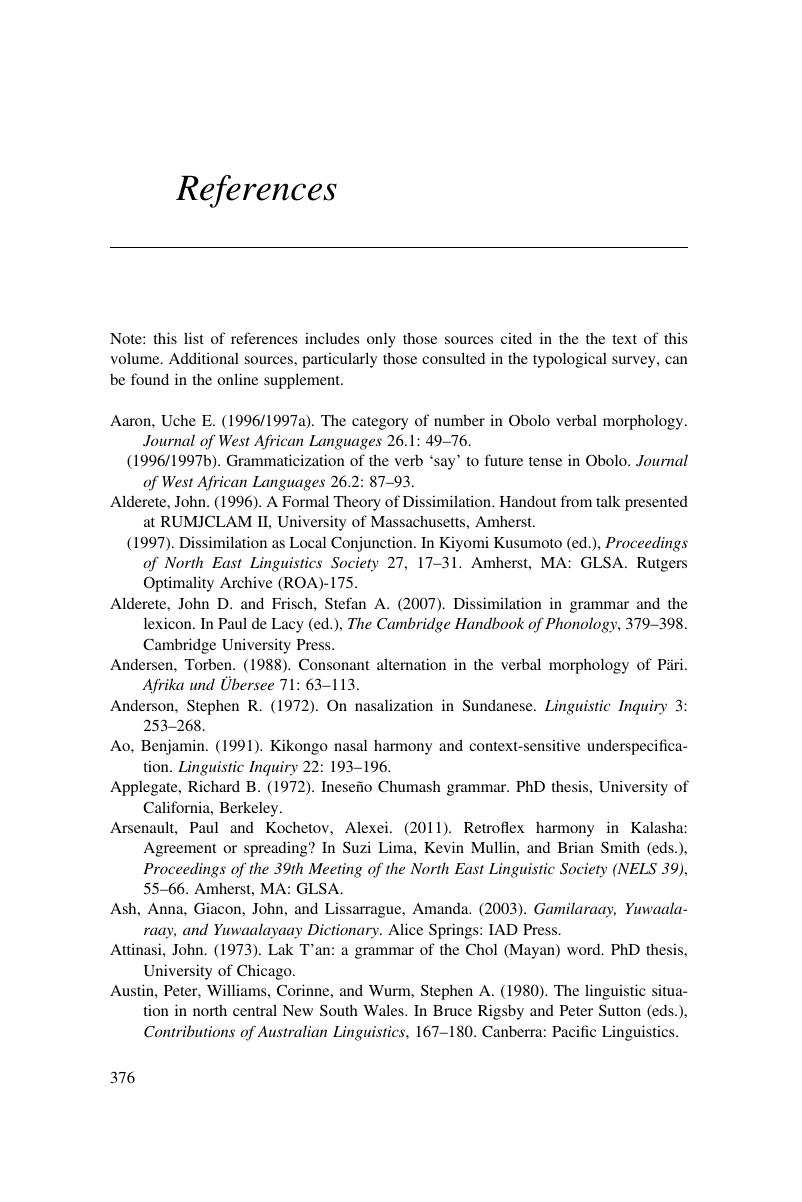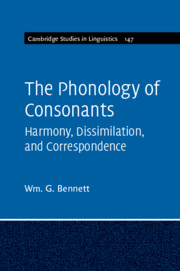Book contents
- The Phonology of Consonants
- In this series
- Cambridge Studies in Linguistics
- The Phonology of Consonants
- Copyright page
- Dedication
- Contents
- Preface
- Book part
- 1 Introduction
- 2 The surface correspondence theory
- 3 Kinyarwanda: the effects of domain edges, and the adequacy of a single SCorr relation
- 4 Sundanese: complementary assimilation and dissimilation
- 5 Quechua and Obolo: the role of syllable edges
- 6 Chol and Ponapean: complete identity effects
- 7 Zulu labial dissimilation: SCTD and the OCP
- 8 Segmental blocking effects in dissimilation
- 9 Typological survey of dissimilation
- 10 Concluding remarks
- References
- Language index
- Subject index
- References
References
Published online by Cambridge University Press: 05 April 2015
- The Phonology of Consonants
- In this series
- Cambridge Studies in Linguistics
- The Phonology of Consonants
- Copyright page
- Dedication
- Contents
- Preface
- Book part
- 1 Introduction
- 2 The surface correspondence theory
- 3 Kinyarwanda: the effects of domain edges, and the adequacy of a single SCorr relation
- 4 Sundanese: complementary assimilation and dissimilation
- 5 Quechua and Obolo: the role of syllable edges
- 6 Chol and Ponapean: complete identity effects
- 7 Zulu labial dissimilation: SCTD and the OCP
- 8 Segmental blocking effects in dissimilation
- 9 Typological survey of dissimilation
- 10 Concluding remarks
- References
- Language index
- Subject index
- References
Summary

- Type
- Chapter
- Information
- The Phonology of ConsonantsHarmony, Dissimilation and Correspondence, pp. 376 - 387Publisher: Cambridge University PressPrint publication year: 2015



